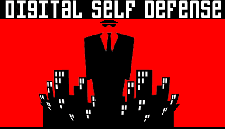
|
 |
|||
|
Black Hat USA 2007 Briefings and Training |
|
Side Channel Analysis and Countermeasures |
||||||||
|
Riscure |
||||||||
|
What to bring:
|
Overview For a long time, Side Channel Analysis (SCA) terms such as Differential Power Analysis (DPA), Timing attacks and Electro Magnetic Analysis (EMA) have had the air of mythical powers to break any crypto system and reveal every secret in a system. This course provides a practical introduction into the world of side channel analysis. It shows the basics and allows students to understand and experience what it means to break a system with these types of attacks. At the same time this course explores the countermeasures that are available to developers. Using these, the side channel attack resistance of software on smart cards and embedded systems will significantly improve. We examine source code implementations on weaknesses and provide hands-on exercises to improve these implementations. This will allow the student to develop a feel for the possibilities and limitations for software-based countermeasures against such attacks. Learning Objectives
Prerequisites:
|
|||||||
|
Trainer:
|
Job de Haas holds an M.Sc. in Electrical Engineering and has a track record in the security industry of more than 15 years. He has experience evaluating the security of a wide range of embedded platforms, such as IPTV decoders, satellite receivers, mobile phones, PDAs, VoIP enabled devices and a range of modems (ADSL, Wireless). Further, he is a specialist in the reverse engineering of applications and consumer electronics that are based on Sparc, MIPS, Intel and ARM processors. At Riscure, Job is the senior specialist in charge of security testing of embedded devices for high-security environments. Amongst others, he assessed the protection of pay television systems against side channel and card-sharing attacks for conditional access providers. Job has researched the security features and weaknesses of embedded technology for many years. Job has a long speaking history at international conferences, including talks on kernel-based attacks, security of mobile technologies such as GSM, SMS and WAP, and the reverse engineering of embedded devices. Jasper van Woudenberg has five years of experience performing security evaluation projects. These include security assessments through network penetration testing and security evaluations of embedded devices, such as telecommunications equipment, payment terminals and mobile phone technology. At Riscure, Jasper performs embedded systems assessments and side channel evaluations. He also provides side channel trainings for Riscure clients worldwide. As part of his research activities, Jasper investigates the application of AI techniques in side channel analysis. Jasper holds an MSc in Computer Science and is writing his final thesis for an MSc in Artificial Intelligence. |
|||||||
|
Course Length: Two days. All course materials, lunch and two coffee breaks will be provided. A Certificate of Completion will be offered. Pre-configured laptops will be provided for this class.
|
||||||||
|
(c) 1996-2007 Black Hat
|
